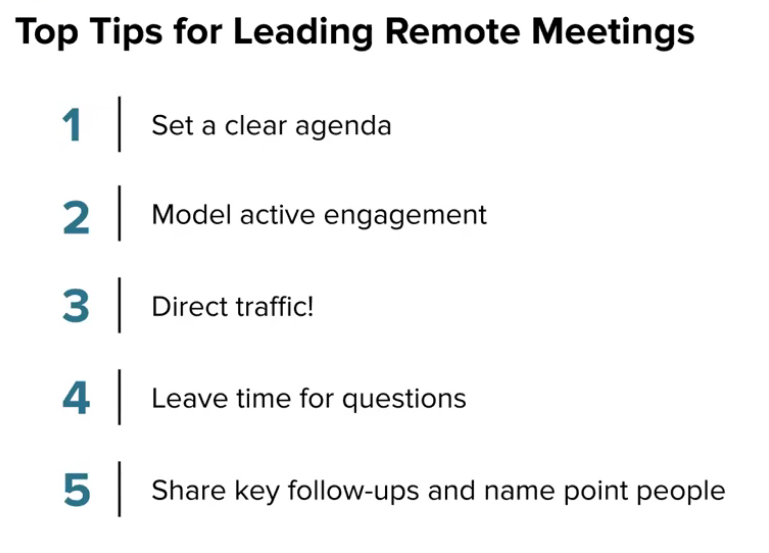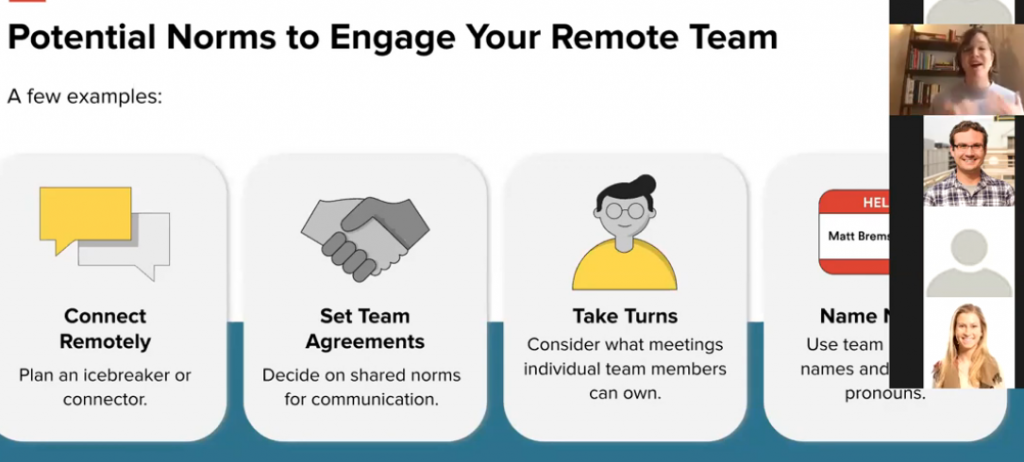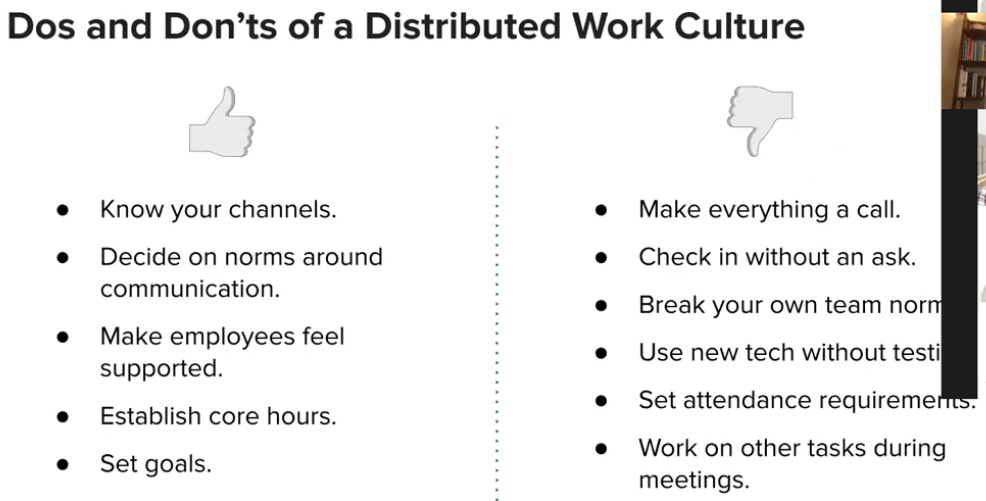The elements of successful remote teams are:
- Knowing how to lead a remote team
- Being an active participant
- Maintaining a positive work culture
Top tips for remote meetings
- Set a clear agenda with time checks
Minutes or % to spend on each topic. Keep meeting times manageable. Allow for stretch breaks every 20 to 30 minutes. If key decisions or input is needed consider sending pre read materials so participants can come to the meeting prepared. - Model active engagement.
Lead with a strong energy - Direct Traffic
Avoid the “no, you go ahead loop”. Own facilitation and direct the conversation. Eg nominating the next person to speak or calling on people to share opinions. Alternatively determine the order of speakers beforehand. - Leave time for questions
Pause when appropriate and ask for peoples thoughts. Name ways for participants to contribute. Invite comments in the chat. Nominate someone to monitor the chat and elevate important points to the meeting attendees awareness. - Share key follow-ups and name point people
send follow ups with the highlights of the meeting. Name key owners of action items. Record and send round to the team.

Remote teams require more inviting in than in person.
Team bonding and preventing feelings of isolation are important for remote teams.

Minimise multitasking during meetings. Make time for others to speak during meetings.

Regular support.
Set clear goals. Don’t check for attendance.
Know and follow team norms.
10:30 – Discussion
Key themes
Remote working is not the same as flexible working
Leaders should engage with direct reports to ensure clear goals and what support they need to achieve those goals – vs taking attendance.
When are people generally available? How to communicate this with the team?
Check ins at start and end of the day. Allow freedom during the day.
What does the working day look like when circumstances change, eg when schools close.
Remote working and Flexible working must be addressed seperately.
working 8 hours over a 14 hour period.
Establish boundaries for starting and finishing work with work as well as family / roommates.
Synchronous vs Asynchronous communication
Synchronous communication includes:
- Phone calls
- Meetings
- Instant messenger
Meetings should have everyone’s camera on. Forces people to be present. Ensure people are in the room.
Asynchronous communication includes:
- Instant messenger
- Jira comments
- Confluence comments
What are team norms around expectations for response times on asynchronous communications?
Allocate heads down (deep work) time, and let it be known.
Appropriate responses to different priority – not everything is an emergency.
Staying connected
Can be difficult to make / keep connections with people.
icebreakers – can be at fixed times during the week
- sharing favourite youtube videos
- trivia
- jokes
Celebrate peoples wins
- anniversaries
- birthdays
- shout-outs
Community and team building activities normally done in person can be done remotely. It just needs to be explicit and intentional to put into action. Eg virtual happy hour – video chat at 4:30 in the evening where everyone has a alcoholic drink in hand.
Understanding that this is a tough time for everyone but may be tougher on some people.
Copy and Pasting what you did in the office to remote working is often a recipe for failure.
Be over communicative, especially for problems.
Meetings must have an agenda, and be explicit about deliverables for a meeting.